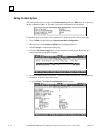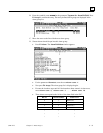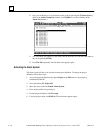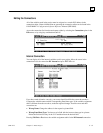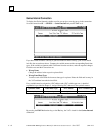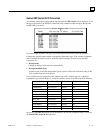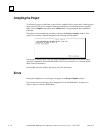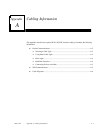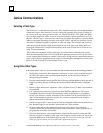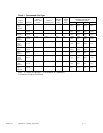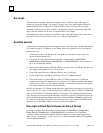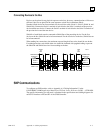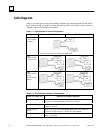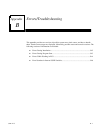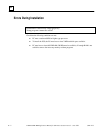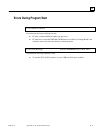
A - 2 PANELWARE MMI Application Manual for GE Fanuc Genius Protocol - June 1995 GFK-1115
A
Genius Communications
Selecting a Cable Type
The Genius bus is a shielded twisted-pair wire, daisy-chained from block to block and terminated
at both ends. Proper cable selection is critical to successful operation of the system. Each bus in
the system can be any cable type listed in table A-1. The 89182, 89207, 4794, 9696, and 89855
types are high temperature cables for use in severe environments, and are qualified for use in air
plenums. The 9815 type is water resistant, and can be used where direct burial is required. Similar
cables of equivalent terminating resistance such as 9207, 89207, and 9815 can be mixed. Do not
mix cables of different impedance, regardless of cable run length. The maximum run for mixed
cable type equals the shortest length recommended for any of the types used. Other, small-size
twisted pair shielded wire of unspecified impedance can be used for short runs of 50 feet or less,
using 75 ohm terminations.
The excellent noise reduction of these cable types, and of the Genius communications system,
allow the communications bus to be mixed with other signaling systems and 120 volt AC control
circuits without added shielding or conduits. Conservative wiring practices, and national and local
codes, require physical separation between control circuits and power distribution or motor power.
Refer to sections 430 and 725 of the National Electric Code.
Using Other Cable Types
If the cables listed in table A-1 are not available, the cable selected must meet the following guidelines:
1
. High quality construction. Most important is uniformity of cross section along the length of
the cable. Poor quality cable can cause signal distortion, and increase the possibility of
damage during installation.
2
. Precision-twisted shielded wire of type EIA RS-422, having a uniform number of twists per unit of
length. In a catalog, this type of cable may be listed as twinaxial cable, data cable, or computer
cable.
3
. Relatively high characteristic impedance; 100 to 150 ohms is best; 75 ohms is the minimum
recommended.
4
. Low capacitance between wires, typically less than 20pF/foot (60pF/meter). This can be
accomplished by inner dielectrics of foamed type, usually polypropylene or polyethylene,
having a low dielectric constant. Alternatively, the conductors can be spaced relatively far
apart. Lower impedance types have smaller cross-sections, and provide easier wiring for
shorter total transmission distances.
5
. Shield coverage of 95% or more. Solid foil with an overlapped folded seam and drain wire is
best. Braided copper is less desirable; spiral wound foil is least desirable.
6
. An outer jacket that provides appropriate protection, such as water, oil, or chemical
resistance. While PVC materials can be used in many installations, Teflon, polyethylene, or
polypropylene are usually more durable.
7
. Electrical characteristics: cable manufacturers' information about pulse rise time and NRZ
data rate is useful for comparing cable types. The Genius bit consists of three AC pulses; the
equivalent NRZ bit rate is about three times as great. For assistance in selecting a specific
cable type, please consult your local GE Fanuc application engineer.



